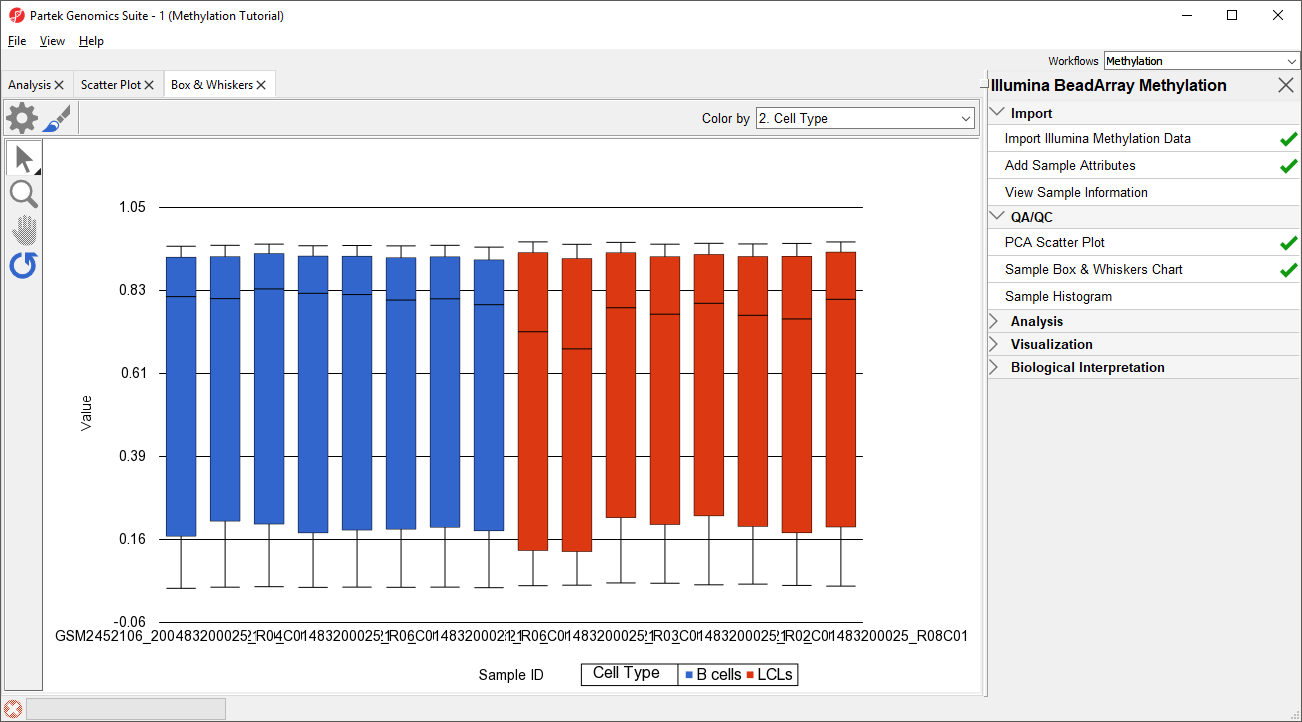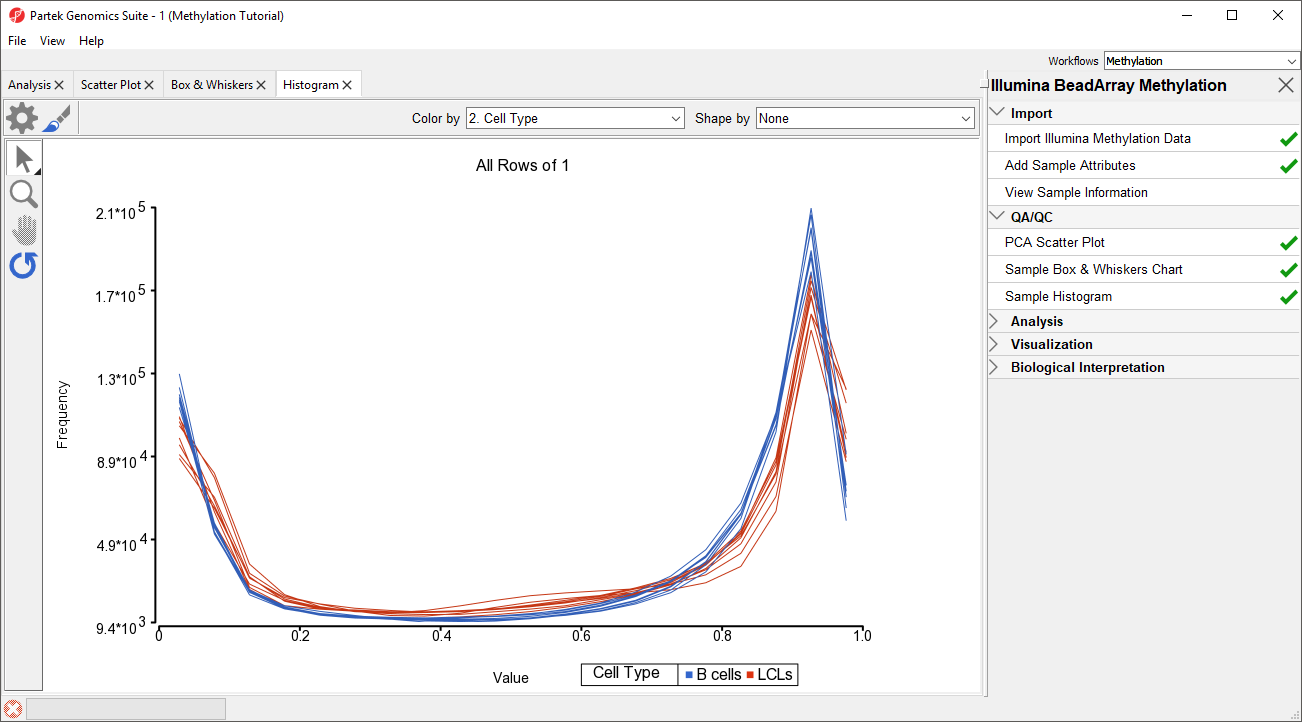Principal component analysis (PCA) can be performed to visualize clusters in the methylation data, but also serves as a quality control procedure; outliers within a group could suggest poor data quality, batch effects, mislabeled samples, or uninformative groupings.
- Select PCA Scatter Plot from the QA/QC section of the Illumina BeadArray Methylation workflow to bring up a Scatter Plot tab
- Select 2. Cell Type for Color by
- Select 3. Gender for Size by
- Select () to enable Rotate Mode
- Left click and drag to rotate the plot and view different angles (Figure 1)
Each dot of the plot is a single sample and represents the average methylation status across all CpG loci. Two of the LCLs samples do not cluster with the others, but we will not exclude them for this tutorial.
Next, distribution of beta values across the samples can also be inspected by a box-and-whiskers plot.
- Select Sample Box and Whiskers Chart from the QA/QC section of the Illumina BeadArray Methylation workflow to bring up a Box and Whiskers tab
Each box-and-whisker is a sample and the y-axis shows beta-value ranges. Samples in this data set seem reasonably uniform (Figure 2).
An alternative way to take a look at the distribution of beta-values is a histogram.
- Select Sample Histogram from the QA/QC section of the Illumina BeadArray Methylation workflow to bring up a Histogram tab
Again, no sample in the tutorial data set stands out (Figure 3).
Additional Assistance
If you need additional assistance, please visit our support page to submit a help ticket or find phone numbers for regional support.


| Your Rating: |
    
|
Results: |
    
|
37 | rates |


